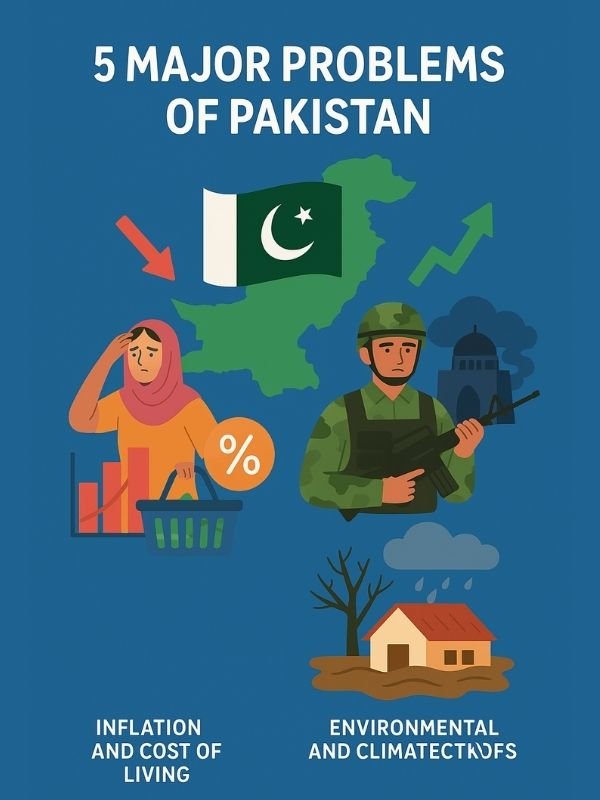The 5 Major Problems of Pakistan: Critical Challenges Facing the Nation in 2025
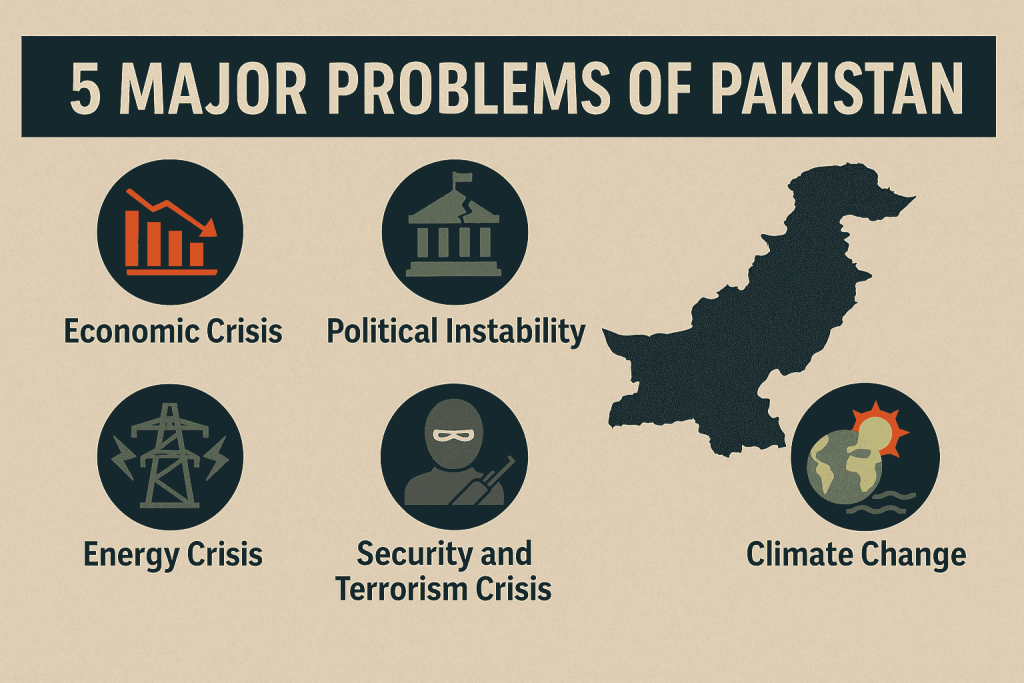

Pakistan today stands at a crossroads. From economic collapse to political instability, citizens feel the weight of challenges that seem never-ending. These crises dominate news headlines, disrupt daily lives, and shape the country’s future.
But here’s the truth: by examining the 5 major problems of Pakistan with the latest data, we can better understand their causes, impacts, and possible solutions. This blog will break down each crisis clearly, with facts and insights you can trust.
In this guide, you’ll discover:
- The five most urgent problems Pakistan faces in 2025
- How each crisis affects the economy, society, and daily life
- Practical steps and reforms that experts recommend
Table of Contents
5 Major Problems of Pakistan in 2025: Ranked by Severity
To provide a clear picture, we’ve ranked the challenges by their scale, urgency, and impact on citizens. While these problems are deeply interconnected, Pakistan’s economic crisis continues to stand out as the number one challenge, influencing every other issue.
Pakistan’s Devastating Economic Crisis – The Primary Challenge
The economy is the backbone of any nation, and in Pakistan’s case, it’s also the biggest source of instability. With foreign debt piling up, inflation hitting record highs, and millions sliding into poverty, Pakistan’s economic crisis has become the most severe problem in 2025.
IMF Bailout Dependency and Foreign Debt
Pakistan’s reliance on International Monetary Fund (IMF) bailouts has turned into a cycle of debt and austerity. The country currently owes over $125 billion in external debt, with frequent repayment deadlines forcing new loans just to pay off old ones.
Inflation and Cost of Living Pressures
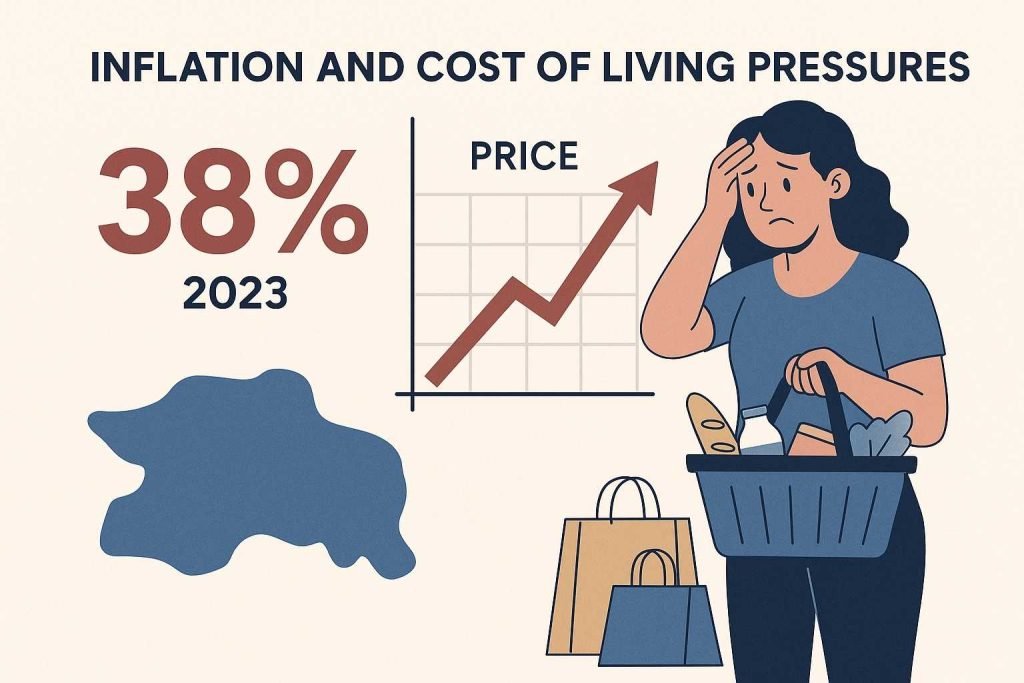

Inflation peaked at 38% in 2023, and although it has eased slightly, food and fuel remain out of reach for many families. Rising prices erode purchasing power, leaving millions struggling with basic necessities.
Checklist: Signs of Pakistan’s Economic Distress
- Frequent IMF bailout negotiations
- High inflation and unstable currency value
- Growing poverty rate (42.3% in 2024)
- Falling foreign reserves ($4.5 billion by late 2024)
Political Instability and Democratic Backsliding in Pakistan
Politics in Pakistan has long been a source of turmoil. Frequent disputes, weak institutions, and a powerful military presence create uncertainty that blocks progress. Political instability is one of the 5 major problems of Pakistan because it directly affects governance, policymaking, and foreign investment.
Electoral Disputes and Governance Failures
Every election cycle brings allegations of fraud, vote rigging, and lack of transparency. These disputes weaken trust in democracy and create power vacuums where no party can implement long-term reforms.
Military’s Role in the Hybrid Democracy
The military continues to influence politics behind the scenes. This hybrid model undermines civilian authority, resulting in unstable policies that swing with power shifts.
Constitutional Deadlocks and Policy Paralysis
Legal disputes and constitutional crises stall reforms in areas like taxation, education, and social welfare. Instead of focusing on economic growth, leaders are locked in endless political battles.
Impact on Development and Reform Implementation
Without stable governance, foreign investment slows, poverty worsens, and international credibility suffers. Political paralysis keeps Pakistan from solving its deeper structural problems.
Pakistan’s Worsening Security and Terrorism Crisis
Security challenges remain among the top 5 major problems of Pakistan. Resurgent militant groups, separatist movements, and cross-border conflicts drain resources and threaten citizens’ safety.
TTP Resurgence and Civilian Casualties
The Tehrik-i-Taliban Pakistan (TTP) has staged deadly attacks, killing over 579 civilians in 2024. Despite military operations, the group continues to regroup and spread fear.
Balochistan Separatist Violence
In Balochistan, separatist movements and the Baloch Liberation Army (BLA) carry out regular strikes. This not only destabilizes the region but also discourages investment in mining and infrastructure projects.
Cross-Border Terrorism Challenges
Instability spilling over from Afghanistan contributes to rising terrorism within Pakistan. Weak border control and lack of coordination make the problem worse.
Security Spending vs Development Trade-offs
Pakistan spends billions on defense and counter-terrorism. But every rupee spent on conflict reduces funds available for schools, hospitals, and job creation. This cycle fuels long-term underdevelopment.
Environmental and Climate Catastrophes in Pakistan
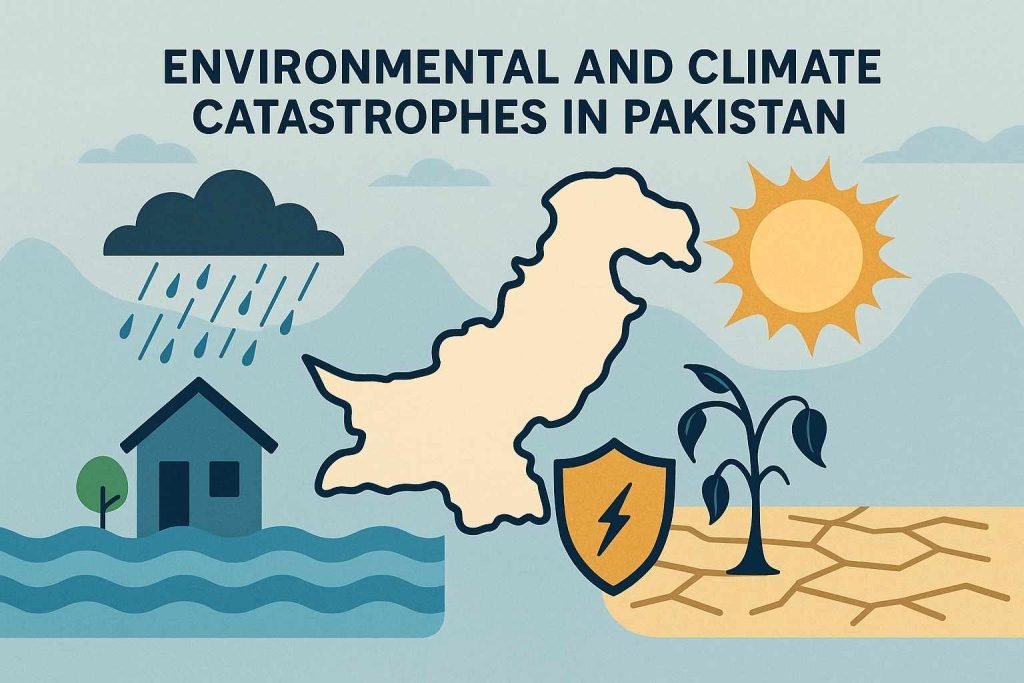

Environmental stress is no longer a distant threat. It is here, and it is reshaping lives, cities, and the economy. Among the 5 major problems of Pakistan, climate vulnerability stands out as both a present danger and a multiplier of other crises.
2022 Floods Aftermath and Reconstruction
The 2022 floods caused damages exceeding $30 billion. Recovery remains slow, with thousands still displaced. Poor drainage, weak urban planning, and limited financing make future events even riskier.
Water Scarcity and Food Security Risks
Pakistan is classified as a water-stressed country. Agricultural production, which employs much of the population, depends on glacial melt and rainfall. With rapid population growth, demand far outpaces supply. Food inflation is the direct outcome of water scarcity and crop failure.
Climate Vulnerability and Global Ranking
Global indices place Pakistan among the top 10 most climate-vulnerable nations. Extreme heat waves, floods, and droughts intensify poverty and migration pressures. Climate shocks intersect with energy shortages, agricultural risks, and public health crises.
The Path Forward: Solutions and Reform Priorities
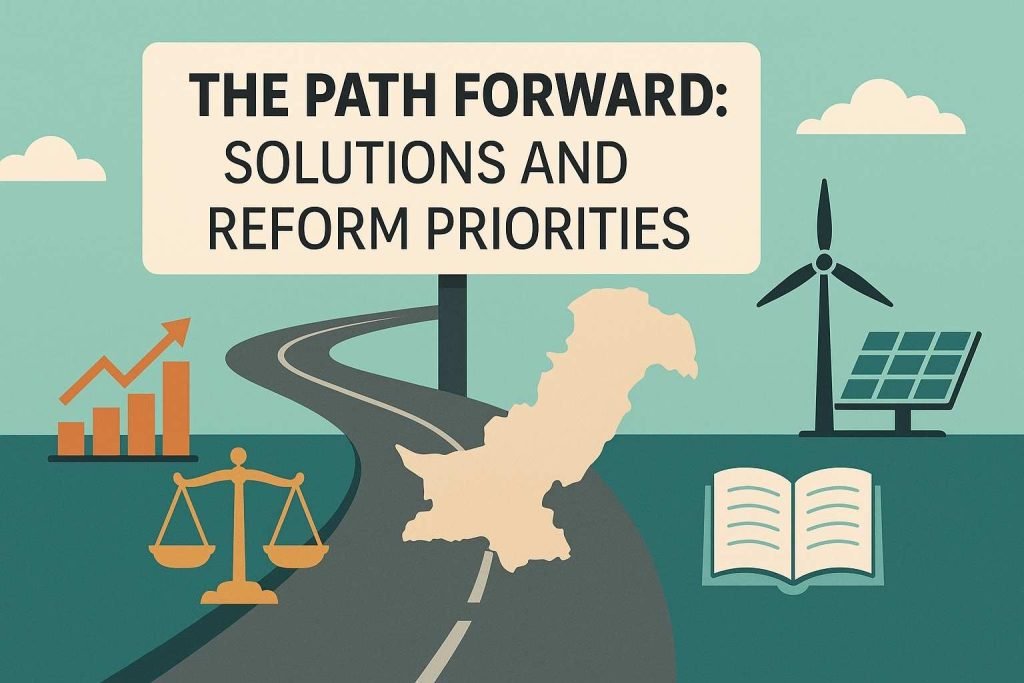

Understanding the 5 major problems of Pakistan is only the first step. Equally important is identifying reforms that can create a sustainable path forward.
Economic Stabilization and Debt Management
Fiscal discipline, broadened tax bases, and reduced reliance on IMF bailouts are essential. Long-term debt restructuring and export diversification would create breathing space.
Democratic and Governance Reforms
Stronger electoral institutions, reduced military interference, and judicial consistency can restore political stability. Transparency and anti-corruption drives are critical to rebuild trust.
Counter-Terrorism and Regional Cooperation
Better intelligence coordination, cross-border dialogue, and investment in conflict-prone regions like Balochistan would reduce the human and economic costs of insecurity.
Energy Sector Transformation
Shifting toward renewable energy, renegotiating unsustainable contracts, and expanding low-cost solar projects could ease the circular debt trap. A stable energy mix would directly improve growth prospects.
Conclusion: Understanding the 5 Major Problems of Pakistan
Pakistan’s challenges in 2025 are serious, interconnected, and urgent. Economic collapse, political instability, terrorism, energy shortages, social deficits, and environmental shocks combine to form a national crisis. Yet with the right reforms, progress is possible. Awareness is the first step, and informed citizens can drive demand for accountability and change.
Call to Action: Stay updated with reliable insights and join the dialogue on solutions. Follow our platform for regular updates on Pakistan’s economic, social, and environmental reforms.
Author Bio
Author: ZunNurain Khalid, Founder of ExploreX Pvt. Ltd. and travel-tech entrepreneur. With over a decade of experience in digital strategy and policy advocacy, he writes on Pakistan’s economic, social, and tourism challenges with a focus on sustainable solutions.

